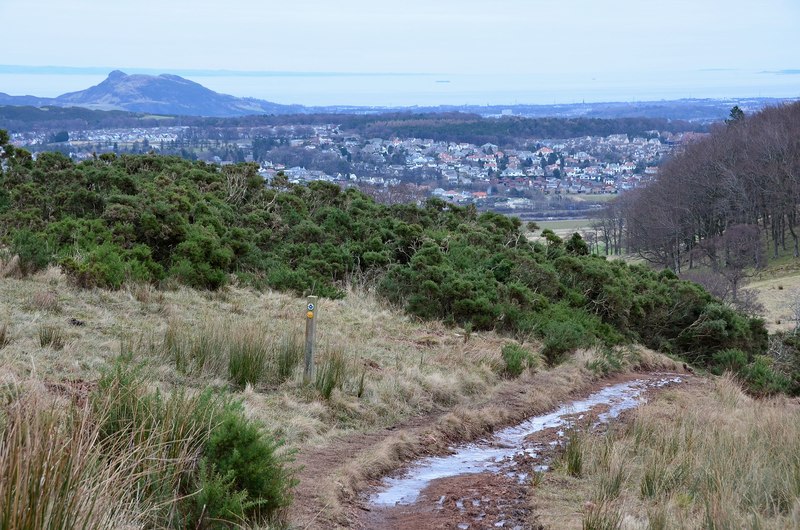Pentland Hills Regional Park: outdoor infrastructure survey

cc-by-sa/2.0 – © Jim Barton – geograph.org.uk/p/3343260
In September 2020, the Scottish Parliament held a debate on ‘dirty camping’. Many MSPs spoke out against the poor behaviour their constituents had witnessed over the summer. This behaviour was caused not only by a lack of understanding about how to interact with the land, but also by a lack of outdoor facilities. In a blog at the time, I commented on Scotland’s woeful outdoor infrastructure. Our public outdoor spaces often lack public toilets, basic camping facilities, access for disabled people and safe active travel routes.
Our country parks, regional parks and national parks are vitally important landscapes.
The Pentlands is just one of three regional parks in Scotland (the others being Lomond Hills and Clyde Muirshiel) set up under the Countryside (Scotland) Act 1981. Scotland has established no new regional parks since 1990, despite the powers still being in place to do so. Setting up a regional park signals an intention to manage the land for public recreation as well as conservation.
Christine Grahame MSP introduced a Member’s Bill in 2015 proposing to extend the boundaries of the Pentland Hills Regional Park, to include 100% of the range instead of 45%. The Scottish Parliament disagreed to the general principles of the bill and it fell – largely on the grounds of cost, a perceived lack of demand and a feeling that it was inappropriate for central government to concern itself with the operation of regional parks given that this responsibility rests with local authorities.
The City of Edinburgh Council manages the park on behalf of the three local authorities whose boundaries cross the park area. The Council is currently asking the public for views on access and camping in the Pentland Hills Regional Park.
The premise of this engagement exercise is that there has been “a rise in irresponsible wild camping, antisocial behaviour and a significant rise in car park usage” in recent months and years. Quite rightly, the Council have identified the provision of proper infrastructure as the solution. They are proposing:
- Enhanced parking facilities at the four main car parks
- Development of active-travel alternatives
- Creation of Warden position with formalised camping area and toilets at Harlaw
- Provision of improved toilet facilities
- Introduction of parking charges
Unfortunately, the touted development of active travel alternatives appears to be little more than minor upgrades to the footpaths around the car parks and scenic areas. It is not clear whether the City of Edinburgh Council – which is the managing authority for the park – also has plans to create the kind of joined-up active travel network that would truly encourage people to choose walking or cycling over driving. The planned expansion of the car parks at Harlaw, Flotterstone and Threipmuir only underline the extent to which those wanting to access the Pentlands are encouraged to depend on their cars.
Prioritising active travel routes to the Pentlands would not only reduce congestion on access roads, but also benefit local businesses – the research is clear that people spend more when they leave their cars at home.
The council says that there has been an increased number of cases of anti-social camping at the reservoirs. It proposes a twofold solution. First, a warden to prevent camping around Harlaw Reservoir between March and October. Second, the establishment of a basic camping area for 8 – 10 groups on the north-east side of the reservoir. Those wishing to camp there would need to pay a “small charge”. Toilets and bins would be provided. The revenue from this would pay for the employment of the warden.
If we are to have camping permit zones at all in Scotland, they should be a last resort once all other methods of addressing poor public behaviours have been tried. Basic facilities such as toilets and waste disposal, funding rangers, investing in outdoor education – these are all ways to enhance how people use and relate to land. Drawing a line between which land can and cannot be accessed by the public undermines our statutory rights.
The provision of toilets is vital in enabling access to outdoor recreation opportunities – as well as preventing the obvious problem of mess. Proper toilet provision is even more important for marginalised groups in society – particularly women or people with gastrointestinal disorders. So of course I welcome the 10 additional toilets the council is proposing for the Pentlands.
However, I find it astonishing that these toilets will come with a charge. Years of cuts to council budgets have left us in a situation where even the most basic of facilities must be paid for at point of use. Proper financing of Scotland’s outdoor public spaces is essential – now more than ever.
Public parks in other parts of Europe provide better facilities; better habitats for wildlife; better cycle routes; and better access by foot or bike. Proper outdoor infrastructure opens up the countryside for everyone. Our impoverished and underpowered local authorities are simply unable to meet demand. Without action and fair funding from the Scottish Government, local authorities like the City of Edinburgh Council will simply have to do what they can with what they have.
The survey closes on 4 December 2020 and I encourage anyone who is interested to share their views:
https://consultationhub.edinburgh.gov.uk/sfc/pentland_hills_regional_park/